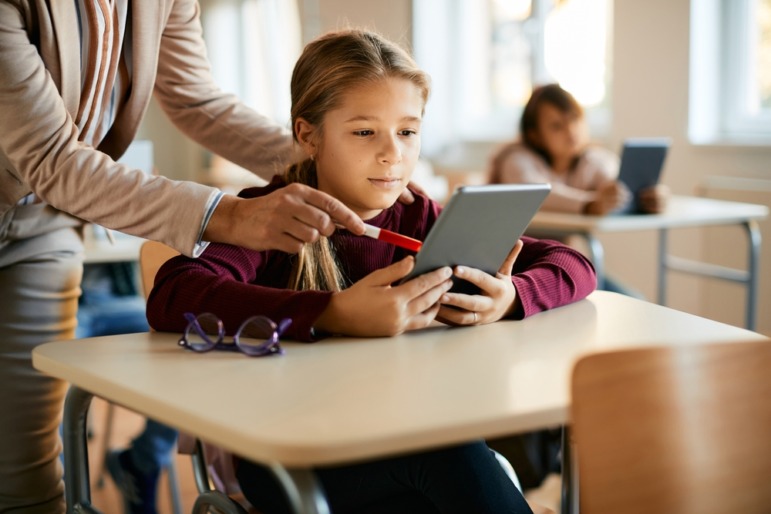“Pat the Bunny,” the 1940 classic touch-and-feel book, is still in print – a testament to the value of touch in introducing infants and toddlers to the world of reading. Later, when children reach school age, a common technique for teaching the alphabet is using hands-on manipulation, such as forming letters out of clay.
But as these students get older, the role of touch diminishes – to the students’ detriment. Today’s reading assignments are heavily digital, and use of computer keyboards for writing shows no sign of abating, especially given the lure of AI tools for editing and composing.
I’m a linguist who investigates the differences between print and digital reading and how writing supports thinking. My colleague Anne Mangen and I asked more than 500 secondary students at an international school in Amsterdam about their experiences when reading print versus digital texts. Separately, I surveyed 100 university students and young adults in the U.S. and Europe on their likes and dislikes about handwriting versus typing.
Together, their responses demonstrate that adolescents and young adults continue to value touch in their encounters with the written word. The research offers important lessons for educators and parents.
What students tell us
In the studies, students wrote glowingly about touch when asked for the one thing they liked most about reading in print or writing by hand. What surprised me was how closely their perceptions about the importance of touch aligned in both studies.

fizkes/Shutterstock
“The feeling of a book in my hands is a very comfortable feeling,” said one student surveyed.
On a physical level, the feeling of holding a book or writing instrument in their hands mattered to students. These are some of their observations: “You actually feel like you are reading because the book is in your hands,” and “I like feeling the paper and pen under my hands, being able to physically form words.” Study participants also commented on the interaction of touch and movement. Regarding reading, one wrote about “the feeling of turning each page and anticipating what’s to happen next.” About writing by hand, one participant described “being able to feel the words just glide across the page.”
“The satisfaction of a whole page filled by handwriting, it feels like I climbed a mountain.”
Student survey respondent
Many students also mentioned cognitive benefits. A host of respondents wrote about focus, concentration, immersion or memory. Regarding print reading, one student said, “I take it more seriously because it’s physically in my hands.” For writing, one response was, “I can see what I’m thinking.”
There were also psychological reflections. Students wrote, “The feeling of a book in my hands is a very comfortable feeling,” and “The satisfaction of a whole page filled by handwriting, it feels like I climbed a mountain.” Other comments addressed how touch made students feel more personally connected to the act of reading and writing. About reading, one reflected that “it is more personal ‘cause it’s in your hands.” About handwriting, another declared, “I feel more attached to the content I produce.”
A number of respondents wrote that reading physical books and writing by hand somehow felt more “real” than engaging with their digital counterparts. One student commented on “the realness of the book.” Another reported that “it feels more real than writing on a computer, the words seem to have more meaning.”
The studies also asked what participants liked most about digital reading and about writing on a computer keyboard. Out of more than 600 answers, only one mentioned the role of touch in what they liked most about using these technologies for reading and writing. For reading, students praised the convenience and access to the internet. For writing, greater speed as well as internet access were frequent responses.
What science tells us
What students say about the importance of touch mirrors what researchers have found: Touch is an effective way to build early reading and writing skills, as well as to support how more developed readers and writers interact with the written word.

Drazen-Zigic/Shutterstock
Digital devices don’t provide the same experience as books, pens and pads.
Psychologists and reading specialists continue to report higher comprehension in children and young adults when reading in print versus digitally, for both academic and leisure reading.
[Related: Including young learners in the push for reading reform]
For proficient writers, evidence suggests that spending more time writing by hand than using a computer keyboard correlates with better fine motor skills. A recent study in Norway compared brain images of university students taking notes and found that those who wrote by hand – rather than typing – showed greater electrical connectivity in the parts of the brain that process new information and support memory formation.
Strategies going forward
The challenge for teachers and parents is to figure out how to incorporate touch into literacy activities in a world that’s so reliant on digital tools. Here are three suggestions for addressing this paradox.

Screenshot from video interview
Naomi S. Baron, professor emerita of linguistics
• Parents and teachers can begin by listening to students themselves. Despite all their time spent on digital devices, many young people clearly recognize how touch contributes to their reading and writing experiences. Expand the conversation by talking together about differences between digital and hands-on reading and writing.
• Next, parents can find opportunities for children to read print and write by hand outside of school, such as bringing their kids to the library to check out print books and encouraging them to write a story or keep a journal at home. Better still is when adults model these practices in their own lives.
• Finally, educators need to increase space in the curriculum for print reading and for handwritten assignments. Some teachers are already revisiting the intrinsic benefits of handwriting, including as a memory aid and a vehicle for thinking – both qualities that participants mentioned in my writing survey.
Digital reading materials and keyboards will undoubtedly persist in schools and homes. But this reality must not preclude the power of touch.![]()
***
Naomi S. Baron, professor emerita of linguistics at American University, has appeared extensively in the media, including interviews on Good Morning America, ABC News 20/20, CNN, The Diane Rehm Show, All Things Considered, the BBC, the New York Times, Wall Street Journal, Washington Post, Chronicle of Higher Education, New Yorker, Fortune, and Time.
The Conversation is a nonprofit, independent news organization dedicated to unlocking the knowledge of experts for the public good. The Conversation democratizes knowledge by helping academic experts to write for the public. Free to read. Free to republish.
This article is republished from The Conversation under a Creative Commons license. Read the original article.


























